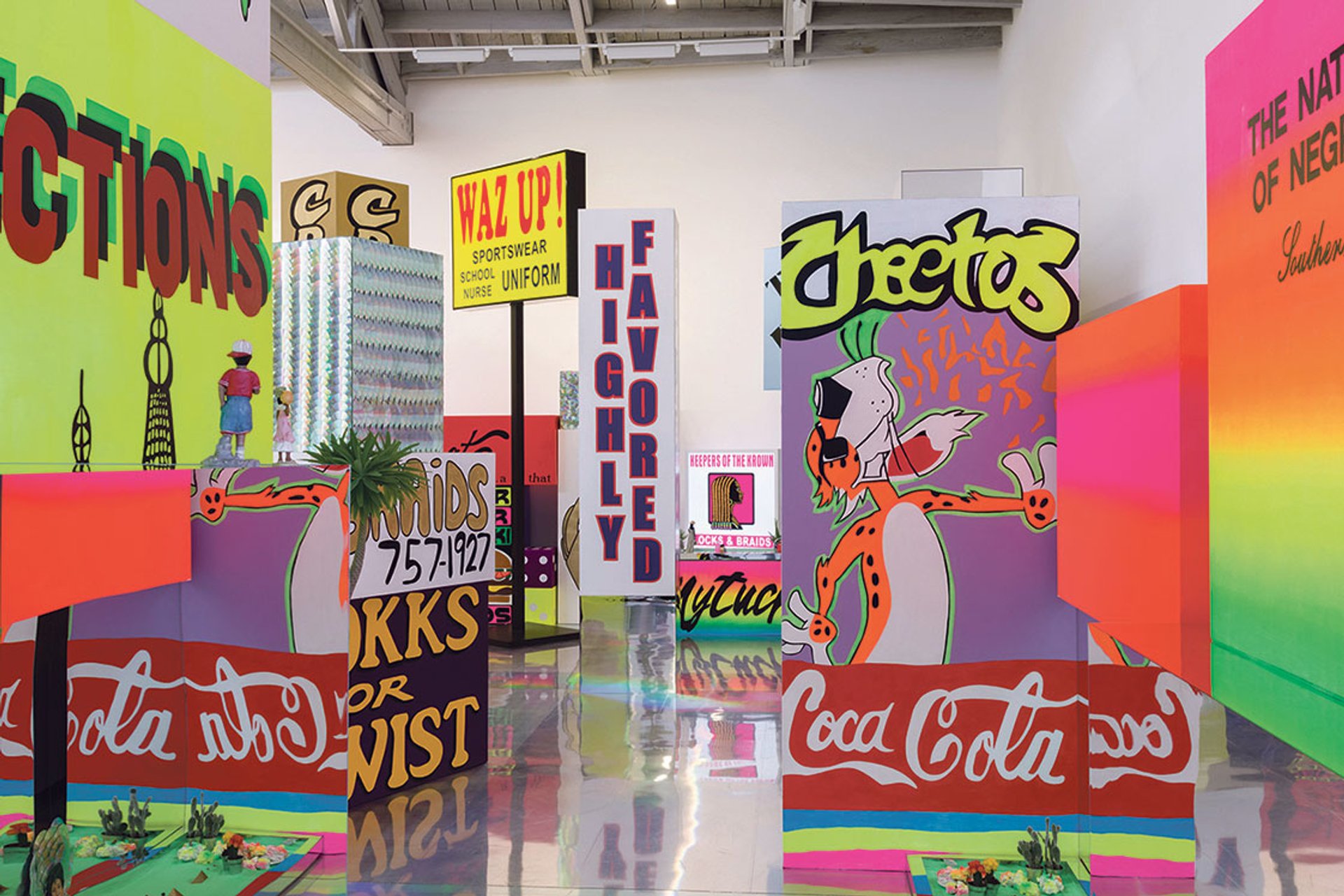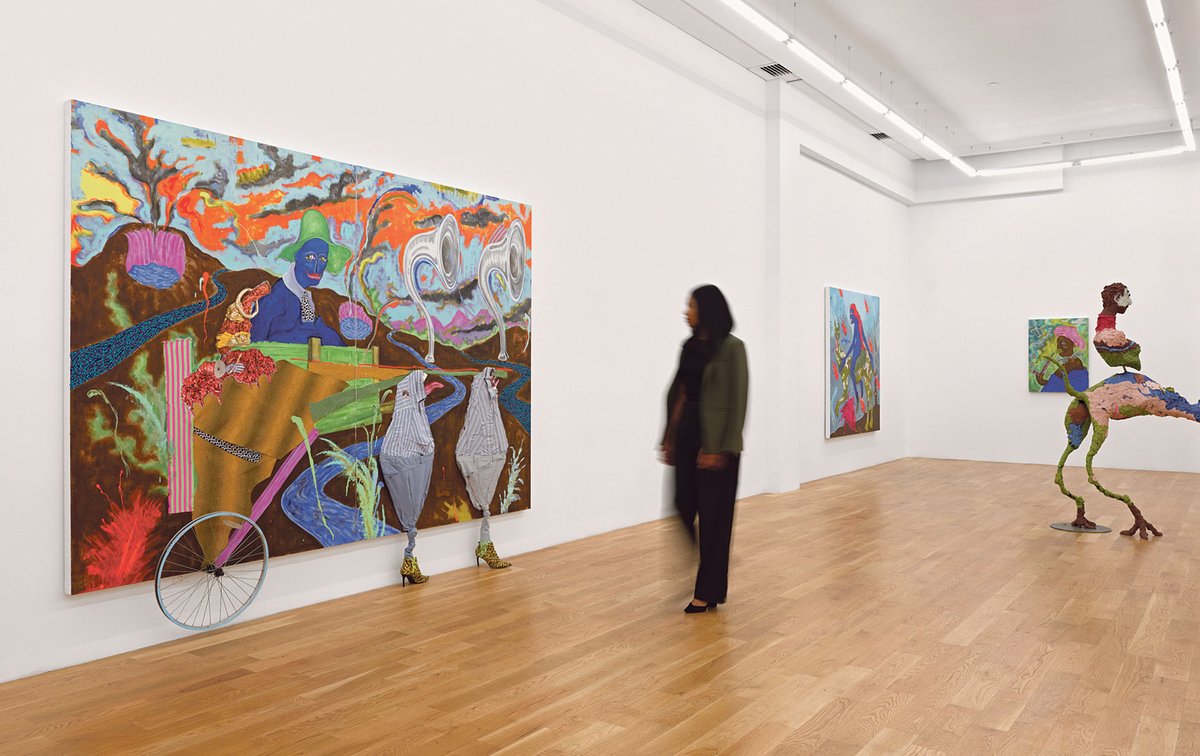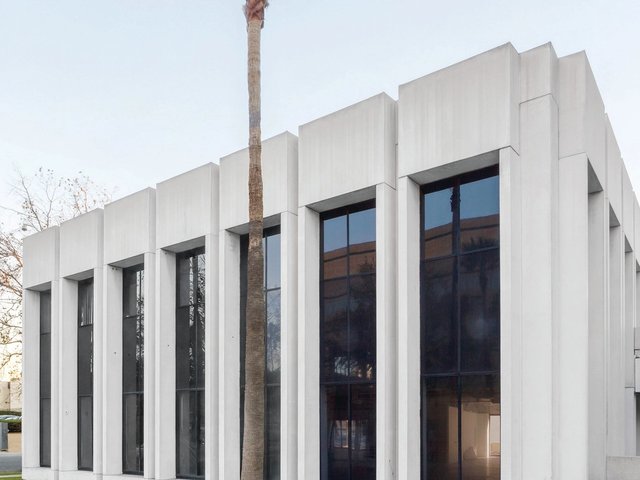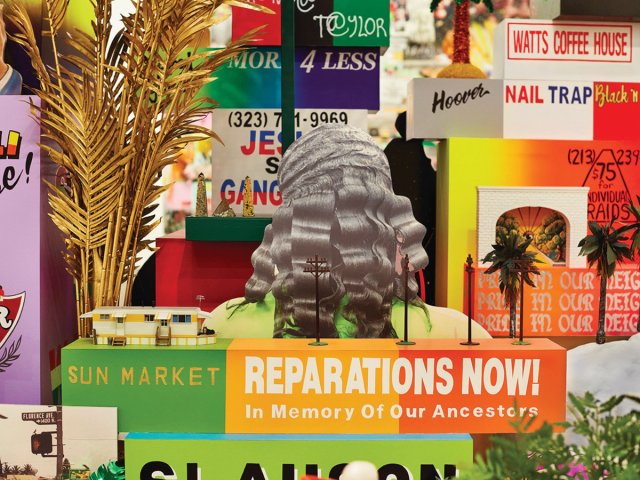For decades now Los Angeles has been a natural place for New York dealers to set up a second shop. Early on, Pace and Luhring Augustine gave it a try, and more recently Matthew Marks, Michele Maccarone and Jeffrey Deitch have established roots, along with the Swiss mega-gallery Hauser & Wirth and, next in line, David Zwirner.
But these days the opposite is also happening, with California-grown galleries finding the means and motives to open up in New York—helped to some degree by pandemic-adjusted real estate prices. In May François Ghebaly opened a space on the Lower East Side with a group show featuring longtime gallery artists such as Neïl Beloufa, Kelly Akashi and Candice Lin. In October Nicodim Gallery opened up in SoHo to show the super-vivid, phantasmagoric paintings and sculptures of Cape Town-born, Los Angeles-based artist Simphiwe Ndzube.
And, in the highest-profile move yet, David Kordansky is currently renovating a space on West 20th Street in Chelsea, with plans to give Los Angeles artist Lauren Halsey her first solo gallery show in New York in the spring—before even bigger galleries sweep in to do the same, as they have for other Kordansky artists such as Mary Weatherford (Gagosian), Rashid Johnson (Hauser & Wirth) and Sam Gilliam (Pace).
“It makes a lot of sense to start with Lauren,” Kordansky says. “She is having this incredible moment where she has the Serpentine [Galleries, in London] and all these institutional exhibitions taking place outside of Los Angeles.”
In this way, Los Angeles galleries opening in New York is not so different from the reverse scenario. A bi-coastal expansion allows galleries to schedule more shows overall, give their artists more exposure, get to know a different set of collectors and museums on the ground and, in the case of in-demand artists such as Halsey, to maintain a valuable monopoly over the North American market. But the number of Los Angeles galleries going eastward these days also reflects their success in the artist-discovery business and their desire to be more than a stepping stone for artists on the rise.
Mihai Nicodim, who opened his Los Angeles gallery in 2006 and a branch in his native Bucharest in 2012, has built a reputation for introducing challenging and sometimes gnarly-looking new art, with an initial focus on Eastern Europe. “We have an amazing group of young artists, most of whom have never shown in New York,” he says, mentioning Isabelle Albuquerque, Mosie Romney and Devin B. Johnson as examples.

Lauren Halsey created a small city of signage at David Kordansky in 2020 Photo: Jeff McLane; courtesy of David Kordansky Gallery, Los Angeles
“Simphiwe is the cornerstone of our young programme: he’s been the calling card in a way when we want to meet young artists,” says Nicodim director Ben Lee Ritchie Handler. As for the October show, he said it sold out before it opened: “Simphiwe has a waitlist a mile long.”
Aiding and soliciting
Ghebaly too said that several artists in his programme—including Los Angeles painter-plus Sayre Gomez and French-Algerian multimedia artist Neïl Beloufa—were not represented yet in New York, though he noted wryly that a couple of his artists were solicited by New York gallerists as soon as news of his space there got around.
Ghebaly says he considered expanding to his native France, but New York won out in part because of the quality of the institutions and collections there. “I think the move is giving us the chance to work more closely and be in more constant dialogue with the best institutions in the country,” he says, adding, “Selling art at this moment is not difficult, it’s more a question of who we want to sell to.”
Dealers tell The Art Newspaper they believe the pandemic’s effect on commercial real estate made East Coast outposts more viable financially. “We found an incredible real estate opportunity and moved on it,” Kordansky says.
“I was not really well versed on real estate in New York but it was a manageable deal because we moved early [during Covid],” Ghebaly says.
Or, as Nicodim put it when asked if he found pandemic-era prices more feasible: “This is what I’m told. Everybody told me there are great opportunities in New York. [But] I don’t know. New York is not cheap but our gallery has grown, so we were in a position to expand.”




